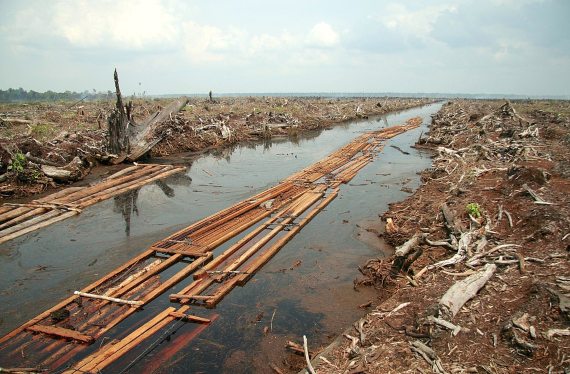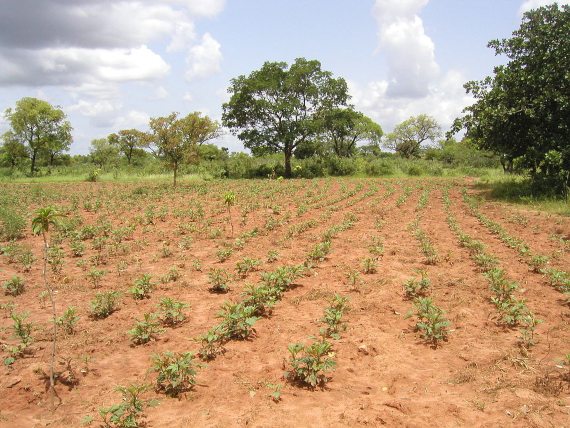Nobody doubts that deforestation is one of the factors that exacerbate climate change, even more so when these lands previously occupied by forests are converted to agricultural, industrial or urban use. And these changes are often irreversible; it is not possible to recover the lost forest cover at the stroke of a pen, nor can we do without these homes, factories or food production operations. But the solution might seem to be at our fingertips: we can just plant trees where there is currently land available, and in this way gradually recover what has been lost. Nowadays there are numerous large-scale reforestation initiatives against climate change, often backed by companies that claim to be offsetting their carbon emissions. But is it really that simple? Is planting billions of trees really enough to heal the planet’s climatic wound?
The evolutionary miracle of photosynthesis allows plants to absorb CO2 from the atmosphere while expelling as waste the oxygen we animals need to breathe. Trees are natural sinks that sequester immense amounts of carbon in their plant matter and in the soil. When trees are lost, the carbon they retain is released into the atmosphere, increasing the greenhouse effect responsible for climate change. For years now, a multitude of initiatives have emerged that seek to restore this lost forest mass, such as #TeamTrees, Arbor Day Foundation or 8BillionTrees, some of them with the resounding support of major technology entrepreneurs; 1t.org, launched by the World Economic Forum, aims to bring together entities, governments and individuals to plant a billion trees during this decade.
The power of reforestation in question
These projects received a great boost in 2019 with the publication of a study in Science that endorsed the power of reforestation in the fight against climate change. Researchers at the Swiss Federal Institute of Technology in Zurich (ETH) estimated that the Earth could sustain an increase of more than 25% in its forested area —an area the size of the United States— without shutting down farms or demolishing homes and that these new forests could store 25% of current atmospheric carbon, equivalent to two-thirds of anthropogenic emissions to date. “The restoration of trees remains among the most effective strategies for climate change mitigation,” wrote Jean-François Bastin and his collaborators. The media echoed this with emphatic headlines, such as this from National Geographic: “How to erase 100 years of carbon emissions? Plant trees—lots of them.”

However, the reaction of the scientific community was somewhat less enthusiastic. The journal Science received four independent comments signed by other groups of researchers who seriously questioned the ETH’s estimates. In the largest response to the study, nearly 50 scientists from around the world, led by Texas A&M University ecologist Joseph Veldman, claimed that the calculation by Bastin and his collaborators had overestimated by a factor of five the carbon storage capacity of this hypothetical new forest cover, for three reasons: first, the original study had underestimated the amount of carbon stored in non-forested soils; second, it had not taken into account the fact that tree crowns increase the solar heat absorbed compared to many non-forested areas, especially those that are usually covered with snow; and third, the proposed model had relied on planting trees on ancient native savannas and grasslands, regions that cannot be reforested because they have never been forested, and which are vital for both ecosystem health and human communities.
“Bastin et al. strongly overestimate the potential of forest restoration to mitigate climate change,” wrote Pierre Friedlingstein from the University of Exeter, and other researchers, in a comment critical of the study. “The claim that global tree restoration is our most effective climate change solution is simply incorrect scientifically and dangerously misleading.” For his part, Veldman and his co-authors wrote that ecological restoration can help, but that “it is no substitute for the fact that most fossil fuel emissions will need to stop,” and that the priority should instead be “the conservation of intact, biodiverse ecosystems, irrespective of whether they contain a lot of trees.”

An example of how in some cases planting trees can do more harm than good in the fight against climate change is the tundra grasslands of the Arctic. There, the frozen layer of soil, the permafrost, retains a large amount of carbon in the form of organic matter. Planting trees would raise the temperature of the soil, melting the permafrost and allowing microbes to break down that substrate, releasing methane and CO2 into the atmosphere. This is why two scientists, Sergey Zimov and his son Nikita, created the Pleistocene Park in Siberia, a nature reserve in which they intend to recover the ancient tundra grasslands that were covered up by forests when the large herbivores went extinct. To facilitate this restoration, the Zimovs hope that one day scientists will succeed in “de-extincting” the mammoth, a key species in those ancient ecosystems.
Spontaneous natural repopulation and more trees between other trees
In response to the criticism received, Bastin and his collaborators published a correction to their study in which they clarified that they knew of “no other current carbon drawdown solution that is quantitatively as large in terms of carbon capture” as reforestation, without, however, attributing greater importance to this strategy than cutting emissions and conserving ecosystems. The problem with reforestation, writes Gabriel Popkin in Science, is that “the enthusiasm and money flowing to forest-based climate solutions threaten to outpace the science.” In other words, the idea is not as simple as merely filling the world with trees, and studies must first determine what the optimal solutions are that will allow the full potential of reforestation to be exploited without causing more harm than good.
In this respect, Popkin cites two recently published studies. In the first of these, published in Nature, Susan Cook-Patton of The Nature Conservancy and a large international team analyse the carbon storage potential of deforested areas where new forests could be allowed to grow naturally without disturbing native ecosystems or occupying agricultural land. These areas, which would be similar in size to Australia, could sequester a quarter of fossil fuel emissions over the next 30 years, the researchers estimate. The advantage of this approach is that it encourages greater plant and animal biodiversity with native species. The main challenge, however, is that these emerging forests are often the preferred targets for logging and land clearing. As Napier University ecologist Mark Huxham wrote, “it’s a lot easier to plant seeds than it is to grow trees.”

Alongside spontaneous natural repopulation, another possible option is to plant more trees between other trees. This is the proposal of the US Department of Agriculture team led by Grant Domke and published in PNAS. According to the authors, US forests currently sequester 14% of annual CO2 emissions, but 16% of these areas contain less than 35% of the forest mass they could sustain. By replenishing these forests to their maximum capacity, the researchers estimate that this volume of carbon storage could increase by almost 20%. Here again, there are objections; even if it were feasible to plant 16 billion trees a year, as this strategy would require, the resulting denser forests would be more vulnerable to massive fires such as those currently ravaging large areas of California.
For all these reasons, and always under the premise that science must be left to do its work to determine how and where reforestation can do its bit against climate change, the experts warn that these proposals must never serve as mere greenwashing by corporations and divert attention from the main battlefront: the essential drastic cut in emissions. In the words of Karen Holl, an expert in reforestation ecology from the University of California, Santa Cruz, “we can’t plant our way out of climate change.”
Comments on this publication